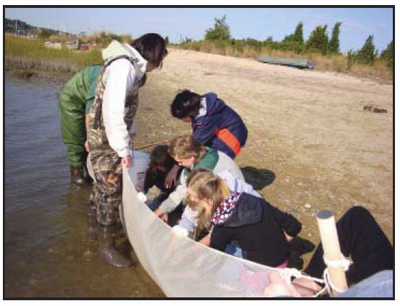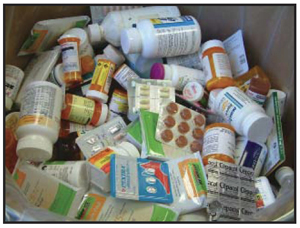Stony Brook, NY, Summer 2011 - Long Island Sound is an estuary where freshwater from our rivers, land, and groundwater mixes with the saltwater from the Atlantic Ocean. The Sound’s coast is lined with many types of habitats—from tidal wetlands to rivers and from rocky shorelines to sandy beaches—all of which provide important feeding, breeding, and nursery grounds to more than 120 different species of fish as well as many other animals.


Like many creatures, we also call Long Island Sound our home. More than 8.8 million residents live within the Sound’s watershed (or the area of land that drains to the Sound) and more than 20 million people live within 50 miles of this “urban estuary”. From 1980 to 2006, the amount of people living around the Sound increased by over a million people.
As expected, the dense population of people living around the Sound can also cause many problems. Research has shown that the quality of water decreases as impervious (or hard) surfaces around a water body increase. Pollutants such as bacteria from animal waste, fertilizers and pesticides, and trash accumulate on hard surfaces and, during heavy storms, the rainwater washes these pollutants into storm drains that flow directly to the Sound. Septic tanks and cesspools also contribute to water pollution. These systems do not filter chemicals that are poured down our toilets, sinks, and shower drains and these chemicals can soak into our surface groundwater that feeds into Long Island Sound.
Pollutants from stormwater runoff and surface groundwater can have many negative effects on our fish and wildlife populations as well as humans. Pathogens, or disease-causing bacteria that make our beaches unsafe for swimming and shellfish unsafe for consumption, come from animal waste that has been washed off paved and natural surfaces and human waste leaking from improperly maintained septic systems or sewage treatment plants.
Lawn fertilizers, sewage treatment plants, septic tanks, and cesspools contribute nitrogen to our Sound. Excess nitrogen from these sources causes microscopic algae to grow in our waters. As these algae die and decompose, they rob the water column of oxygen which, like us, most animals need in order to live. This condition of low oxygen is called hypoxia. Hypoxia has been studied extensively in Long Island Sound and now researchers know that hypoxic conditions are due to stratification of the water column and even wind direction, in addition to nitrogen loading.

Toxic chemicals are also a concern in the Sound. Chemicals can bioaccumulate in the food chain, having a negative effect on marine animals and humans. Due to strict regulation and product bans, toxic chemical discharges into the Sound and its tributaries have decreased significantly over the past twenty years. However, researchers are still concerned about how household cleaning products, automobile exhausts, pesticides, and other chemicals such as pharmaceuticals and personal care products will affect aquatic life.
The problems impacting the Sound may seem overwhelming but, do not despair, the Long Island Sound Study is here! The Long Island Sound Study partnership was formed in 1985 to protect and restore the Sound. With funding from USEPA’s National Estuary Program, federal and state agencies, user groups, organizations, and individuals work together to keep our Sound healthy. The Long Island Sound Study has done great work for the Sound by improving water quality, restoring habitats, protecting open spaces, and much more.
Although so much has been done to protect and restore the Sound, there is much left to do. Each of us affects the Sound in some way so it is up to all of us to work to keep it healthy and safe for our use.
Here are some ways you can help:
- Pick up after your pets (scoop it, bag it, and toss it!) to reduce excess nutrients and pathogens from washing into our Sound.
- Have your septic tank/cesspool inspected and maintained to ensure that it is working properly and not polluting our Sound.
- Don’t over fertilize—it’s a waste of money and adds excess nutrients to the Sound which contributes to hypoxic events.
- Dispose properly of chemicals and household products. Find a recycling or diposal location near you by visiting: www.Earth911.com
- Larissa Graham, NYSG's Long Island Sound Study Outreach Coordinator